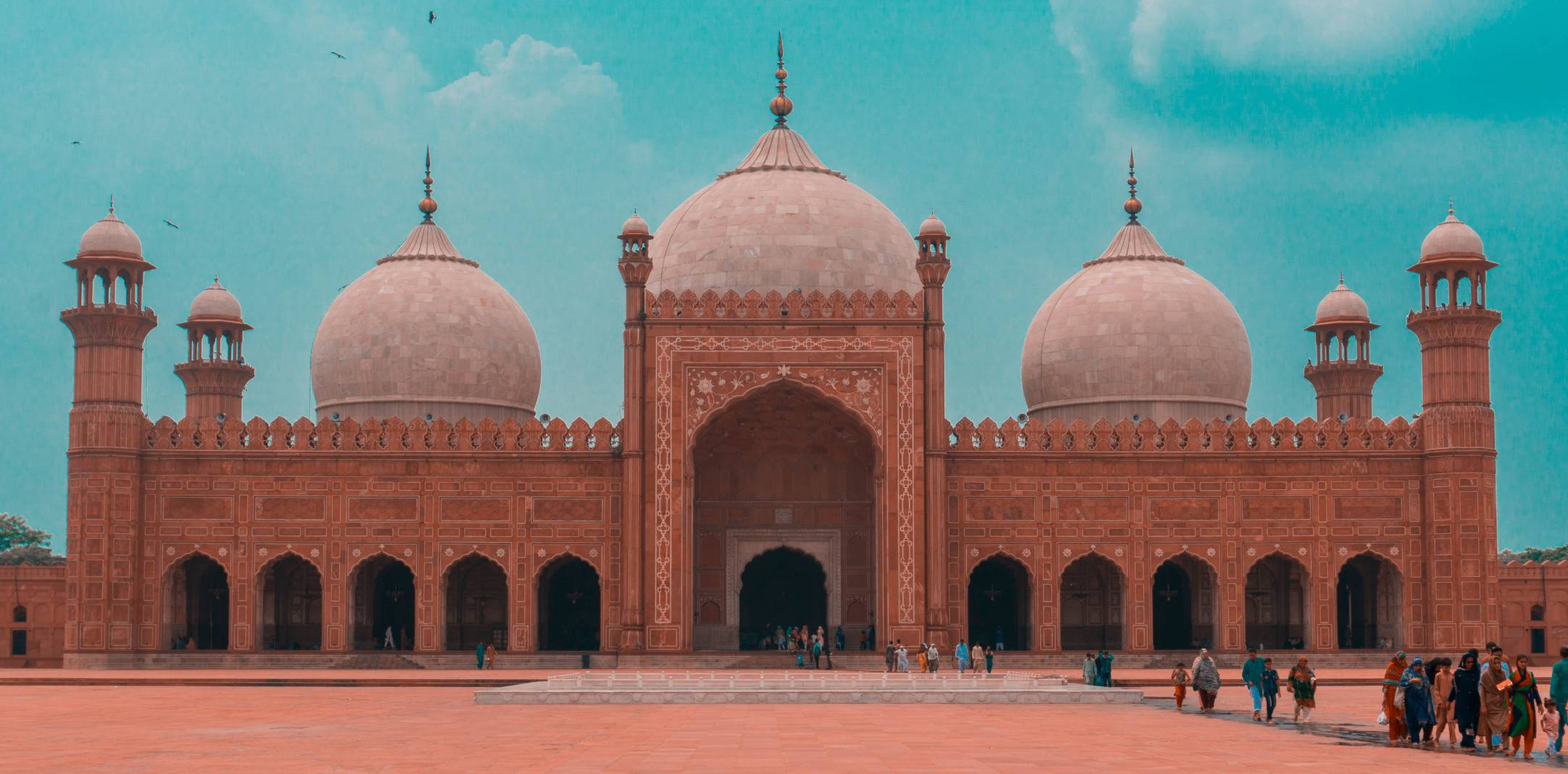The Badshahi Mosque is a Mughal-era congregational mosque in Lahore, capital of the Pakistani province of Punjab, Pakistan. The mosque is located west of Lahore Fort along the outskirts of the Walled City of Lahore, and is widely considered to be one of Lahore’s most iconic landmarks.
Historical Background of Badshahi Mosque :
Construction :
The Badshahi Mosque was constructed by the Mughal emperor Aurangzeb between 1671 and 1673 and was the largest mosque in the world from 1673 to 1986. It remains the largest mosque of the Mughal-era, and is the third-largest mosque in Pakistan. After the fall of the Mughal Empire, the mosque was use as a garrison by the British Empire. But it is now one of Pakistan’s most iconic sights.
The Badshahi Mosque features a monumental gateway that faces the Hazuri Bagh quadrangle and Lahore Fort.
The mosque was commissioned by the Mughal Emperor Aurangzeb in 1671, with construction overseen by the Emperor’s foster brother, and Governor of Lahore, Muzaffar Hussein – also known by the name Fidai Khan Koka. Aurangzeb had the mosque built in order to commemorate his military campaigns against the Maratha king Chhatrapati Shivaji. After only two years of construction, the mosque was open in 1673.
Architectural Work :
As a gateway to the west, and Persia in particular. Lahore had a strong regional style which was heavily influenced by Persian architectural styles. Earlier mosques, such as the Wazir Khan Mosque, were adorned in intricate kashi kari, or Kashan style tile work, from which the Badshahi Mosque would depart. Aurangzeb chose an architectural plan similar to that of Shah Jehan’s choice for the Jama Masjid in Delhi, though built the Badshahi mosque on a much larger scale. Both mosques feature red sandstone with white marble inlay. Which is a departure from typical mosque design in Lahore, in which decoration is done by means of intricate tile work.
Furthermore the entrance to the mosque lies on the western side of the rectangular Hazuri Bagh, and faces the famous Alamgiri Gate of the Lahore Fort. Which is located on the eastern side of the Hazuri Bagh. The mosque is next to the Roshnai Gate. One of the original thirteen gates of Lahore which is to the southern side of the Hazuri Bagh.
Moreover the architectural composition is square based setting including central courtyard with water-pond, four octagonal minarets at four corners of square plot, a square entrance lobby accessed by 22 steps. There are three domes with marble cladding.
During 1939-1960, a comprehensive restoration was take up to revive the original shape of the mosque.
Overview :
The mosque and its vast courtyard are raised upon a platform which is approached from the east by a handsome flight of 22 steps an upstanding gateway of traditional Moghal type. Moreover the entrance which is a double storey edifice is elaborately decorate with framed and carved panelling on all its facades. At the four corners there are square minarets surmount by pseudo-pavilions of red sandstone with white marble cupolas. At the four corners of the courtyard are the tall octogonal minars (towers). Four smaller minarets, also octogonal, are attach to the corners of the prayer chamber. Above them rise three grand bulbous marble domes.
Moreover the red sandstone of the building is decorate externally with unobtrusive lines and patterns in white marble inlay. The embellishment of the prayer chamber in the interior and exterior with Zanjira interlacing and flowers with their spidery tendrils. And treated in bold relief, is a unique work of unsurpassed beauty and workmanship in Moghal architecture. The inscription on the gateway indicates that it was construct in A.H. 1084 (1673-74 A.D.)
Recommended time to visit Badshshahi Mosque :
The best time to visit Badshahi mosque is early in the morning. You can see the mesmerizing architecture with an aesthetic view of sunrise without any disturbance. The visit at the time of sunset can provide you a view which you can never miss. Especially with the food street offering a stunning view of the mosque with thousands of visitors enjoying the beauty of mughal era architectural masterpiece
Access to Badshahi Mosque :
Furthermore Lahore is join with almost all the major cities in Pakistan by an international airport. There are multiple airlines that provide services to the city.
There are numerous bus services to Lahore from almost every city.
Similarly Lahore Junction railway station is Pakistan’s largest train station, connecting Lahore to other cities throughout the country. There are 11 platforms in Lahore, so visitors from outside the city can travel by train safely and cost effectively to Badshahi Masjid.


Comments (2)